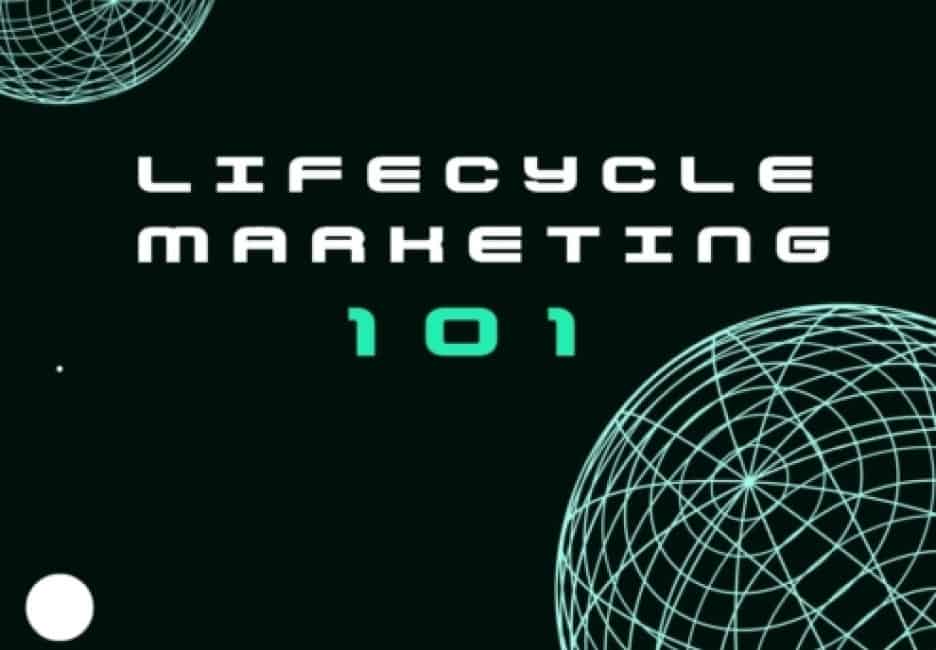
Boost Customer Engagement with Lifecycle Marketing Strategies
Customers interact with your products in several ways. Tracking these interactions is proved to be helpful in reaching business goals and helps you gain a better understanding of user behavior in terms of mobile products. You can gain valuable insights that enable you to carry out data-driven decisions that positively impact your mobile app metrics like conversion rate and retention.
With lifecycle marketing, you can tailor your product to the needs of your target customers as you gain a better understanding of their pain points and the reasoning behind their behavior. Lifecycle marketing best practices can help you track user journeys, build hypotheses to test these journeys, and start campaign trials using the insights you observe. Each of these benefits ultimately boosts your customer engagement and growth. Before discussing these benefits further in-depth, it’s important to understand what lifecycle marketing is all about.
What Is Lifecycle Marketing?

Source: https://unsplash.com/photos/U33fHryBYBU by Melanie Deziel
Lifecycle marketing involves using practical techniques to increase your customer growth or other customer-based goals by creating specific marketing content for your customers based on where they are in their user journey. Not only can you increase the rate at which customers engage with your product, but you can also identify points that have adverse effects on your goals and nip them in the bud.
Due to customers’ various outlooks on life and diverse environments, each user has a unique experience when interacting with your products. Users with a pleasant experience can leave positive reviews and even refer your app to other friends that have similar needs, whereas users with contrasting experiences are likely to do the opposite.
In all, the goal of your marketing endeavors should be to reach as much of your target audience as you can and have a high rate of conversion to long-term, high-engagement users that can become brand advocates. By becoming aware of the levels across which your users connect with your app, you can build more customer-centric marketing campaigns that yield remarkable results.
Lifecycle marketing includes several practices that correspond to the user’s stage in their journey with your product. Such methods include in-app messages, emails, push notifications, and ad campaigns that help your users interact with and understand your product to increase engagement. Targeting your audience this way also enables you to understand areas you can improve on and even discover untapped customer bases that will prove valuable to your business’s growth.
Implementing a Lifecycle Marketing Program
In contrast to the one-size-fits-all marketing approach, lifecycle marketing is a reiterative process that is ongoing and constantly seeks to improve how your customers interact with your product. The three stages of lifecycle marketing are attract, sell and deliver. The initial stage involves learning more about your audience, drawing them in for the sale, and then following through on your brand promises. You can set up campaigns to observe, take notes, and implement strategies based on your insights from initial tests rather than simply creating an ad campaign and hoping for the best. Although user experiences vary, there are common steps that you can carry out, regardless of your product or target audience, that will enable you to spot critical areas of improvement in your marketing projects.
What Is Your Ideal User Journey?
Before launching test campaigns to study and gain insights into user behavior, you must first identify the ideal user journey. The ideal user journey refers to the events that your “perfect” user would experience when interacting with your product at different stages. Envisioning these events enables you to pinpoint areas where you can track user behavior to analyze the rise or drop in the efficiency of your campaigns.
Usually, companies identify more than one user journey due to the unique experiences of their target audience. By mapping out your user journey in distinct stages, you clarify gray areas and track the vital elements that differentiate engaging customers from those that churn. Hence, you can create more specific campaigns that provide more significant insights into why your target audience behaves the way they do, increase clarity regarding the events throughout your ideal user journey, and increase your customer retention rate.
What Set of Hypotheses Can You Test Initially?
Lifecycle marketing campaigns generally start small and improve iteratively. Once you have an idea of your user journey, it is time to test your initial hypotheses to increase your understanding of user behavior in relation to your product. Not only will you be able to better define your milestones, but you will also test out possibilities to see how much they can affect your marketing goals.
For example, suppose most of your customers churn within two days after downloading your app. In that case, you could send out an email asking for feedback or even share a promotional video designed to boost your customer retention rate. Start testing your hypotheses from the beginning of your user journey and implement one idea at a time to get a proper understanding of its impact.
How to Identify Where Customers Are in Their User Journey
To gain actionable insights, you need to identify the various points in your target audience’s user journey. As you are still fine-tuning your ideal user journey, it is alright not to get the points a hundred percent right during the first few times. However, with time and consistent iteration, you can streamline and narrow down the user journey’s milestones.
Pinpointing where your users are in their interaction with your product will enable you to effectively deliver campaigns, which will provide measurable results for further improvement. The results you gain by iterating lifecycle marketing campaigns are valuable in refining your understanding of the user journey as you prove and disprove various hypotheses.
What New Campaigns Can You Experiment With?
Lifecycle marketing best practices include reiterating processes to improve your engagement. Even after you have better understood the user journey and turned your hypotheses into theories that benefit your business’s growth, lifecycle marketing does not stop. You can run more tests to see how to expand your customer base, boost user retention, and achieve your goals.
From running experiments to enhancing your understanding of user behavior, lifecycle marketing campaigns enable you continuously learn and make better moves to increase engagement. Ensure that you weigh the decision of running new experiments against the progress of campaigns that you are running at the same time to minimize adverse effects on the experiments.
Source: https://unsplash.com/photos/hpjSkU2UYSU by Carlos Muza
Here Is Why Customer Lifecycle Marketing Matters
There’s no doubt that your customers greatly impact your business’s growth. Hence, it is important that your customers feel and believe that you value them. With the help of customer lifecycle marketing campaigns, you can personalize your ad copy, emails, and pop-up messages to let your customers know that you genuinely understand their pain points. In addition to helping them solve these issues, you are with them at every step of their user journey.
By considering each user’s interaction with your product, your users are more likely to engage with your content and develop a stronger relationship with your brand. Not only will you have better conversion rates across the stages of the user journey because you understand what they require at each particular stage, but you can also get better customer lifetime value and transform your prospects into loyal customers.
Increase Your Relevance
Rather than using mainstream marketing campaigns to attract your target audience, lifecycle marketing campaigns provide personalized, user-centric content that is more relevant to your audience. The way customers interact with content varies with the different stages of the user journey. Specific campaigns that consider these stages meet the customers where they are to increase your brand’s relevance. With tailored messages and proper context, your users are more likely to engage with your product as it aligns with their current interests.
Make Better Decisions
The insights you get from running experiments and testing your hypotheses provide the solid foundation you need to carry out well-informed decisions. You can avoid creating marketing campaigns from pure guesswork or baseless intuition and engage your users with content you derive from data-driven decisions. The data you gain will enable you to make reasonable improvements on your projects and discover opportunities to expand and mitigate errors.
Gain a Competitive Advantage
With better decision-making and a higher understanding of the stages of your user journey, you can make your marketing strategy more functional. As a result, you can stay relevant in your industry and structure your marketing campaigns according to customers’ needs.
Boost Your Mobile Growth With Lifecycle Marketing
Lifecycle marketing provides immense benefits to your marketing plan and mobile growth as it enables you to understand the behavior of your prospective users and shape your product to boost engagement. Implementing lifecycle marketing best practices is a continuous process that involves understanding your customers’ needs and how your marketing strategies work together to get the best results.
Although this may be overwhelming at first, ShyftUp is here to support you to unleash the power of organic user growth by creating boosted visibility on the app stores. For more strategies to improve your mobile growth, contact us today by filling out the contact form on our website.
What is Lifecycle Marketing?
Lifecycle marketing involves using practical techniques to increase your customer growth or other customer-based goals by creating specific marketing content for your customers based on where they are in their user journey.
Why is Customer Lifecycle Marketing important?
With the help of customer lifecycle marketing campaigns, you can personalize your ad copy, emails, and pop-up messages to let your customers know that you genuinely understand their pain points.